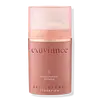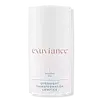What's inside
What's inside
 Key Ingredients
Key Ingredients

 Benefits
Benefits

 Concerns
Concerns

 Ingredients Side-by-side
Ingredients Side-by-side

Water
Skin ConditioningGlycerin
HumectantMaltobionic Acid
BufferingAcetyl Glucosamine
Skin ConditioningOctyldodecyl Neopentanoate
EmollientSteareth-2
EmulsifyingC12-15 Alkyl Benzoate
AntimicrobialOctyldodecanol
EmollientButyrospermum Parkii Butter
Skin ConditioningSteareth-20
CleansingC13-15 Alkane
SolventIsostearic Acid
CleansingSodium Acryloyldimethyltaurate/Vp Crosspolymer
Emulsion StabilisingLysine
Skin ConditioningTocopheryl Acetate
AntioxidantVitis Vinifera Seed Extract
AntimicrobialSerine
MaskingGlycine
BufferingGlutamic Acid
HumectantProline
Skin ConditioningBetaine
HumectantArginine
MaskingThreonine
Saccharide Isomerate
HumectantSodium PCA
HumectantSodium Hyaluronate
HumectantSorbitol
HumectantSilica
AbrasiveAlanine
MaskingCetyl Alcohol
EmollientPropylene Glycol
HumectantCaprylyl Glycol
EmollientSodium Hydroxide
BufferingDisodium EDTA
Sodium Bisulfite
AntioxidantXanthan Gum
EmulsifyingChlorphenesin
AntimicrobialPhenoxyethanol
PreservativeParfum
MaskingCI 19140
Cosmetic ColorantCI 42090
Cosmetic ColorantWater, Glycerin, Maltobionic Acid, Acetyl Glucosamine, Octyldodecyl Neopentanoate, Steareth-2, C12-15 Alkyl Benzoate, Octyldodecanol, Butyrospermum Parkii Butter, Steareth-20, C13-15 Alkane, Isostearic Acid, Sodium Acryloyldimethyltaurate/Vp Crosspolymer, Lysine, Tocopheryl Acetate, Vitis Vinifera Seed Extract, Serine, Glycine, Glutamic Acid, Proline, Betaine, Arginine, Threonine, Saccharide Isomerate, Sodium PCA, Sodium Hyaluronate, Sorbitol, Silica, Alanine, Cetyl Alcohol, Propylene Glycol, Caprylyl Glycol, Sodium Hydroxide, Disodium EDTA, Sodium Bisulfite, Xanthan Gum, Chlorphenesin, Phenoxyethanol, Parfum, CI 19140, CI 42090
Water
Skin ConditioningGluconolactone
Skin ConditioningC12-15 Alkyl Benzoate
AntimicrobialPropylene Glycol
HumectantC13-15 Alkane
SolventPEG-100 Stearate
Lactobionic Acid
BufferingGlycerin
HumectantC12-15 Alkyl Ethylhexanoate
EmollientOctyldodecyl Myristate
EmollientDimethicone
EmollientCetearyl Alcohol
EmollientGlyceryl Stearate
EmollientEthoxydiglycol
HumectantPalmitic Acid
EmollientHydrogenated Vegetable Oil
EmollientStearic Acid
CleansingButylene Glycol
HumectantTocopheryl Acetate
AntioxidantRetinyl Palmitate
Skin ConditioningAscorbyl Palmitate
AntioxidantGlycyrrhiza Glabra Root Extract
BleachingAnthemis Nobilis Flower Extract
MaskingLeuconostoc/Radish Root Ferment Filtrate
AntimicrobialLaminaria Saccharina Extract
Skin ProtectingCalendula Officinalis Flower Extract
MaskingEchinacea Purpurea Extract
MoisturisingHydrogenated Lecithin
EmulsifyingPhospholipids
Skin ConditioningHydrogenated Coco-Glycerides
EmollientSodium Hyaluronate
HumectantHelianthus Annuus Seed Extract
Skin ConditioningCaprylic/Capric/Myristic/Stearic Triglyceride
EmollientPhosphatidylcholine
EmulsifyingOctyldodecanol
EmollientMyristic Acid
CleansingCeteareth-20
CleansingSteareth-2
EmulsifyingPolyacrylamide
C13-14 Isoparaffin
EmollientSodium Hydroxide
BufferingLaureth-7
EmulsifyingMagnesium Aluminum Silicate
AbsorbentCaprylyl Glycol
EmollientXanthan Gum
EmulsifyingDisodium EDTA
Disteareth-100 Ipdi
Phenoxyethanol
PreservativeChlorphenesin
AntimicrobialParfum
MaskingHexyl Cinnamal
PerfumingBlue 1 Lake
Cosmetic ColorantCI 19140
Cosmetic ColorantWater, Gluconolactone, C12-15 Alkyl Benzoate, Propylene Glycol, C13-15 Alkane, PEG-100 Stearate, Lactobionic Acid, Glycerin, C12-15 Alkyl Ethylhexanoate, Octyldodecyl Myristate, Dimethicone, Cetearyl Alcohol, Glyceryl Stearate, Ethoxydiglycol, Palmitic Acid, Hydrogenated Vegetable Oil, Stearic Acid, Butylene Glycol, Tocopheryl Acetate, Retinyl Palmitate, Ascorbyl Palmitate, Glycyrrhiza Glabra Root Extract, Anthemis Nobilis Flower Extract, Leuconostoc/Radish Root Ferment Filtrate, Laminaria Saccharina Extract, Calendula Officinalis Flower Extract, Echinacea Purpurea Extract, Hydrogenated Lecithin, Phospholipids, Hydrogenated Coco-Glycerides, Sodium Hyaluronate, Helianthus Annuus Seed Extract, Caprylic/Capric/Myristic/Stearic Triglyceride, Phosphatidylcholine, Octyldodecanol, Myristic Acid, Ceteareth-20, Steareth-2, Polyacrylamide, C13-14 Isoparaffin, Sodium Hydroxide, Laureth-7, Magnesium Aluminum Silicate, Caprylyl Glycol, Xanthan Gum, Disodium EDTA, Disteareth-100 Ipdi, Phenoxyethanol, Chlorphenesin, Parfum, Hexyl Cinnamal, Blue 1 Lake, CI 19140
Ingredients Explained
These ingredients are found in both products.
Ingredients higher up in an ingredient list are typically present in a larger amount.
C12-15 Alkyl Benzoate is made up of Benzoic Acid and long chain alcohols. It has a low molecular weight.
C12-15 Alkyl Benzoate is an emollient and texture enhancer. Due to its solubility, it is often used in sunscreens to help evenly distribute active ingredients.
As an emollient, C12-15 Alkyl Benzoate helps soften and hydrate your skin. Emollients create a film on your skin that traps moisture within.
This ingredient has been reported to cause eye irritation.
Learn more about C12-15 Alkyl BenzoateC13-15 Alkane is a group of alkanes with 13 to 15 carbon atoms in the alkyl chain.
It is a solvent and texture enhancer. Solvents are used to keep ingredients together in a product. They can help dissolve ingredients to stable bases or help evenly distribute ingredients throughout the product.
Caprylyl Glycol is a humectant and emollient, meaning it attracts and preserves moisture.
It is a common ingredient in many products, especially those designed to hydrate skin. The primary benefits are retaining moisture, skin softening, and promoting a healthy skin barrier.
Though Caprylyl Glycol is an alcohol derived from fatty acids, it is not the kind that can dry out skin.
This ingredient is also used as a preservative to extend the life of products. It has slight antimicrobial properties.
Learn more about Caprylyl GlycolChlorphenesin is a synthetic preservative. It helps protect a product against bacteria in order to extend shelf life. In most cases, Chlorphenesin is paired with other preservatives such as phenoxyethanol and caprylyl glycol.
Chlorphenesin is a biocide. This means it is able to help fight the microorganisms on our skin. It is also able to fight odor-releasing bacteria.
Chlorphenesin is soluble in both water and glycerin.
Studies show Chlorphenesin is easily absorbed by our skin. You should speak with a skincare professional if you have concerns about using Chlorphenesin.
Learn more about ChlorphenesinCI 19140 is also known as Tartrazine. Tartrazine is a synthetic dye used in cosmetics, foods, and medicine to add a yellow color.
Tartrazine is created from petroleum and is water-soluble.
Some people may experience allergies from this dye, especially asthmatics and those with an aspirin intolerance.
Learn more about CI 19140Disodium EDTA plays a role in making products more stable by aiding other preservatives.
It is a chelating agent, meaning it neutralizes metal ions that may be found in a product.
Disodium EDTA is a salt of edetic acid and is found to be safe in cosmetic ingredients.
Learn more about Disodium EDTAGlycerin is already naturally found in your skin. It helps moisturize and protect your skin.
A study from 2016 found glycerin to be more effective as a humectant than AHAs and hyaluronic acid.
As a humectant, it helps the skin stay hydrated by pulling moisture to your skin. The low molecular weight of glycerin allows it to pull moisture into the deeper layers of your skin.
Hydrated skin improves your skin barrier; Your skin barrier helps protect against irritants and bacteria.
Glycerin has also been found to have antimicrobial and antiviral properties. Due to these properties, glycerin is often used in wound and burn treatments.
In cosmetics, glycerin is usually derived from plants such as soybean or palm. However, it can also be sourced from animals, such as tallow or animal fat.
This ingredient is organic, colorless, odorless, and non-toxic.
Glycerin is the name for this ingredient in American English. British English uses Glycerol/Glycerine.
Learn more about GlycerinOctyldodecanol is a fatty alcohol. It is primarily used to enhance the texture of products.
As an emulsifier, Octyldodecanol helps prevent the oils and waters from separating. It also prevents ingredients from creating foam when shaken.
Octyldodecanol is created by reducing fatty acid to an alcohol.
Due to its high molecular weight, it does not get absorbed into the skin.
Learn more about OctyldodecanolParfum is a catch-all term for an ingredient or more that is used to give a scent to products.
Also called "fragrance", this ingredient can be a blend of hundreds of chemicals or plant oils. This means every product with "fragrance" or "parfum" in the ingredients list is a different mixture.
For instance, Habanolide is a proprietary trade name for a specific aroma chemical. When used as a fragrance ingredient in cosmetics, most aroma chemicals fall under the broad labeling category of “FRAGRANCE” or “PARFUM” according to EU and US regulations.
The term 'parfum' or 'fragrance' is not regulated in many countries. In many cases, it is up to the brand to define this term.
For instance, many brands choose to label themselves as "fragrance-free" because they are not using synthetic fragrances. However, their products may still contain ingredients such as essential oils that are considered a fragrance by INCI standards.
One example is Calendula flower extract. Calendula is an essential oil that still imparts a scent or 'fragrance'.
Depending on the blend, the ingredients in the mixture can cause allergies and sensitivities on the skin. Some ingredients that are known EU allergens include linalool and citronellol.
Parfum can also be used to mask or cover an unpleasant scent.
The bottom line is: not all fragrances/parfum/ingredients are created equally. If you are worried about fragrances, we recommend taking a closer look at an ingredient. And of course, we always recommend speaking with a professional.
Learn more about ParfumPhenoxyethanol is a preservative that has germicide, antimicrobial, and aromatic properties. Studies show that phenoxyethanol can prevent microbial growth. By itself, it has a scent that is similar to that of a rose.
It's often used in formulations along with Caprylyl Glycol to preserve the shelf life of products.
Propylene Glycol is an odorless, colorless liquid. As a humectant, it helps skin retain moisture. It also aids in delivering active ingredients.
Another role of this ingredient is preventing a product from melting or freezing. Propylene glycol also adds antimicrobrial properties to a product, elongating product lifespan.
This ingredient is considered an organic alcohol and commonly added into both cosmetics and foods.
Those with sensitive skin or conditions may develop a rash when using this ingredient.
Learn more about Propylene GlycolSodium Hyaluronate is hyaluronic acid's salt form. It is commonly derived from the sodium salt of hyaluronic acid.
Like hyaluronic acid, it is great at holding water and acts as a humectant. This makes it a great skin hydrating ingredient.
Sodium Hyaluronate is naturally occurring in our bodies and is mostly found in eye fluid and joints.
These are some other common types of Hyaluronic Acid:
Learn more about Sodium HyaluronateSodium Hydroxide is also known as lye or caustic soda. It is used to adjust the pH of products; many ingredients require a specific pH to be effective.
In small amounts, sodium hydroxide is considered safe to use. However, large amounts may cause chemical burns due to its high alkaline.
Your skin has a natural pH and acid mantle. This acid mantle helps prevent harmful bacteria from breaking through. The acid mantle also helps keep your skin hydrated.
"Alkaline" refers to a high pH level. A low pH level would be considered acidic.
Learn more about Sodium HydroxideSteareth-2 is a waxy compound used to emulsify ingredients. It is created from polyethylene glycol and stearyl alcohol.
The 2 stands for the number of ethylene oxide units used to create this ingredient.
Tocopheryl Acetate is AKA Vitamin E. It is an antioxidant and protects your skin from free radicals. Free radicals damage the skin by breaking down collagen.
One study found using Tocopheryl Acetate with Vitamin C decreased the number of sunburned cells.
Tocopheryl Acetate is commonly found in both skincare and dietary supplements.
Learn more about Tocopheryl AcetateWater. It's the most common cosmetic ingredient of all. You'll usually see it at the top of ingredient lists, meaning that it makes up the largest part of the product.
So why is it so popular? Water most often acts as a solvent - this means that it helps dissolve other ingredients into the formulation.
You'll also recognize water as that liquid we all need to stay alive. If you see this, drink a glass of water. Stay hydrated!
Learn more about WaterXanthan gum is used as a stabilizer and thickener within cosmetic products. It helps give products a sticky, thick feeling - preventing them from being too runny.
On the technical side of things, xanthan gum is a polysaccharide - a combination consisting of multiple sugar molecules bonded together.
Xanthan gum is a pretty common and great ingredient. It is a natural, non-toxic, non-irritating ingredient that is also commonly used in food products.
Learn more about Xanthan Gum